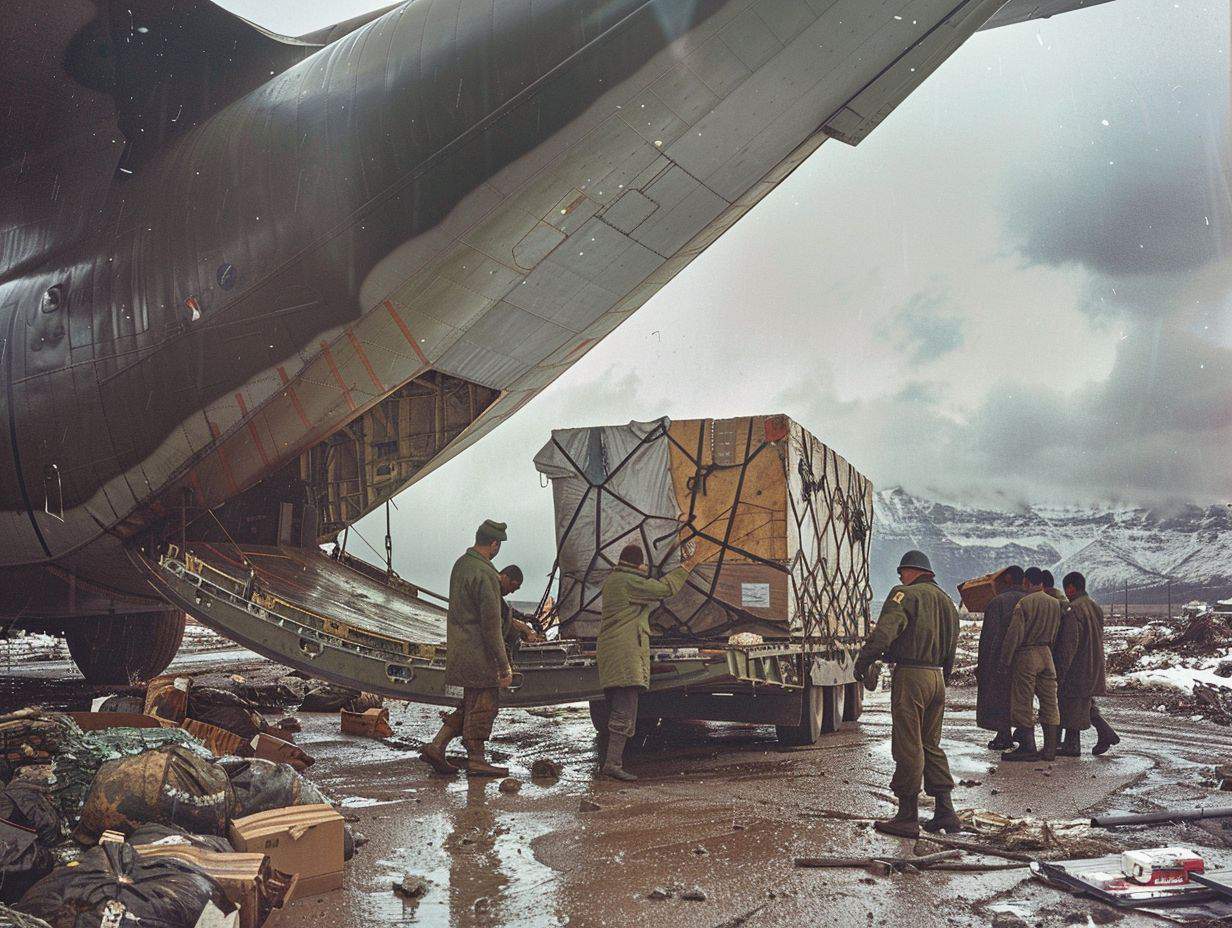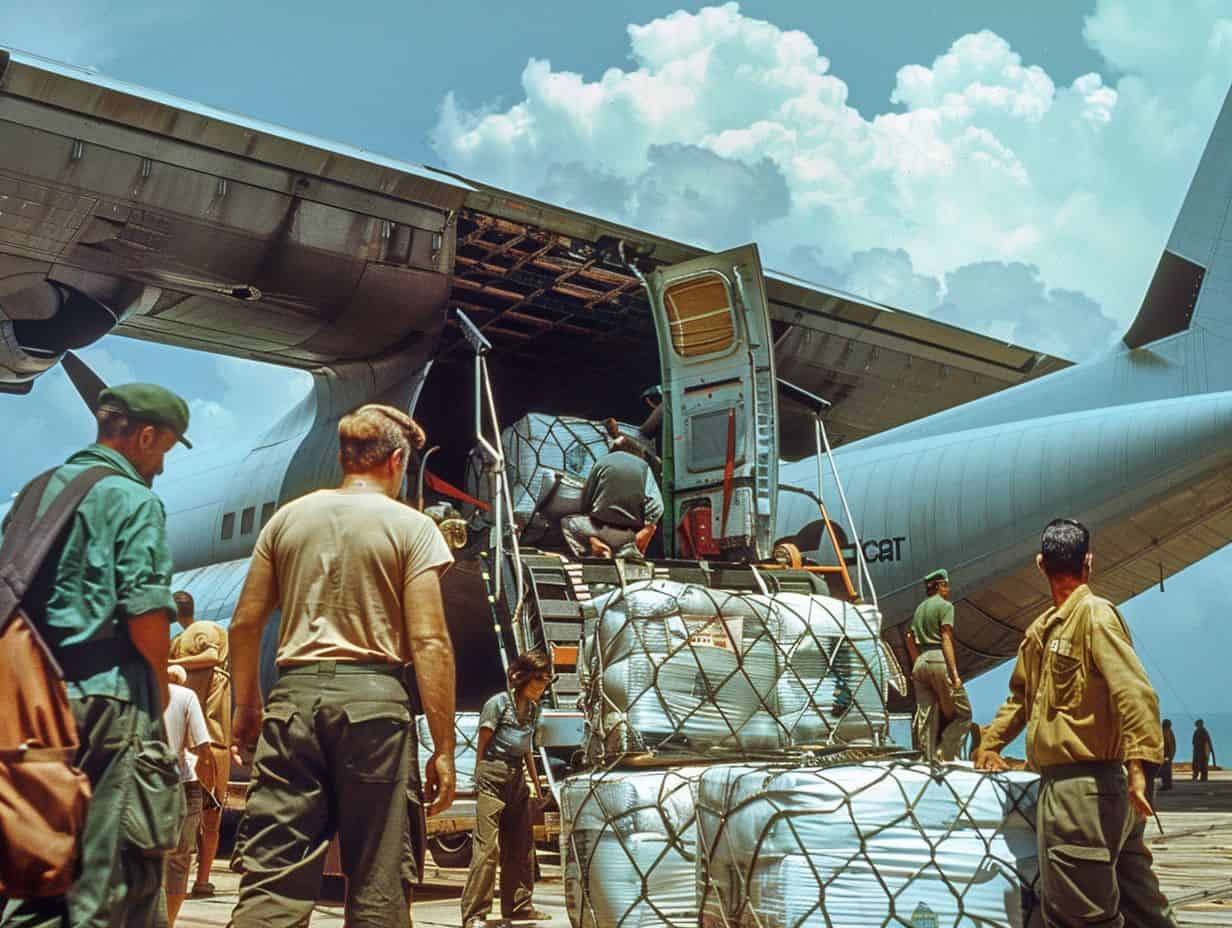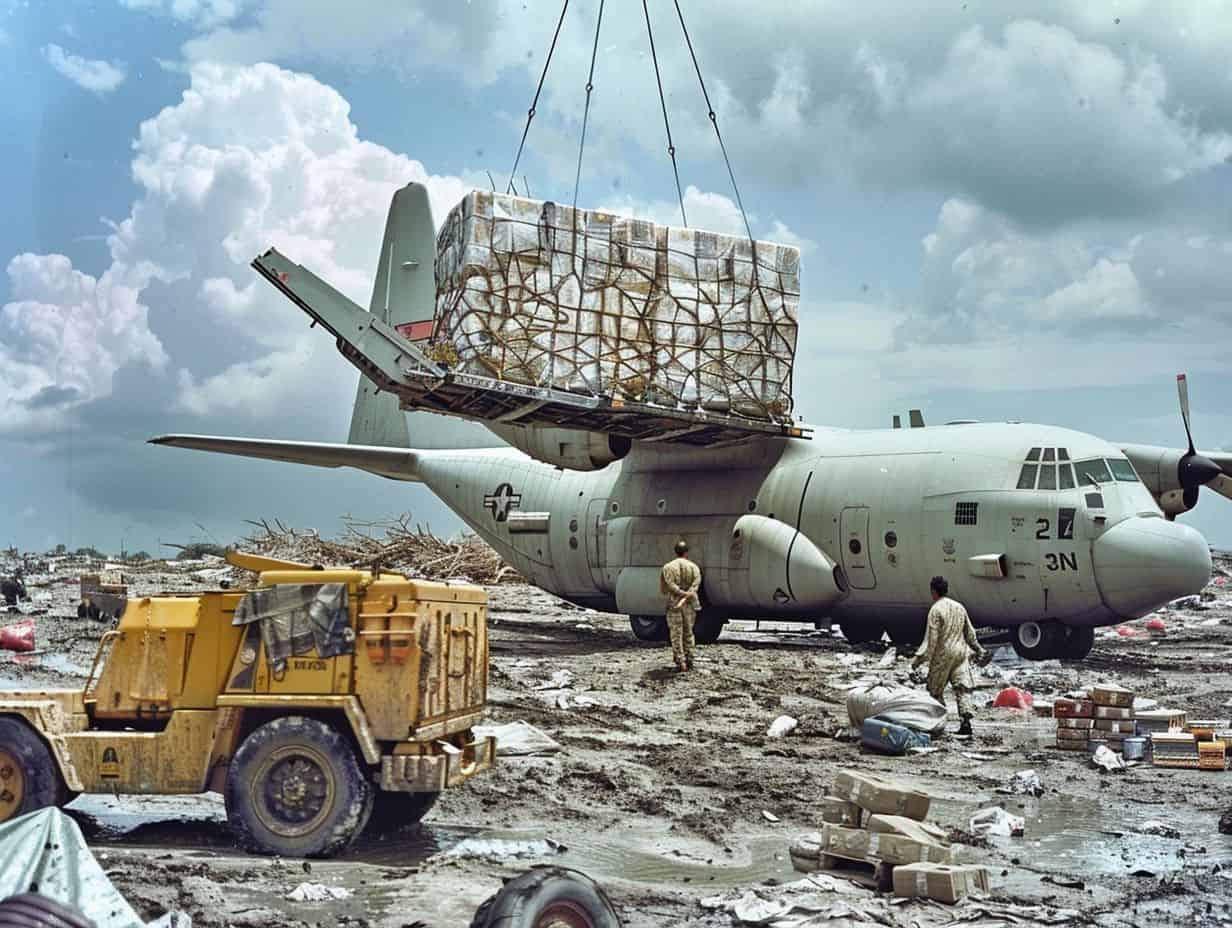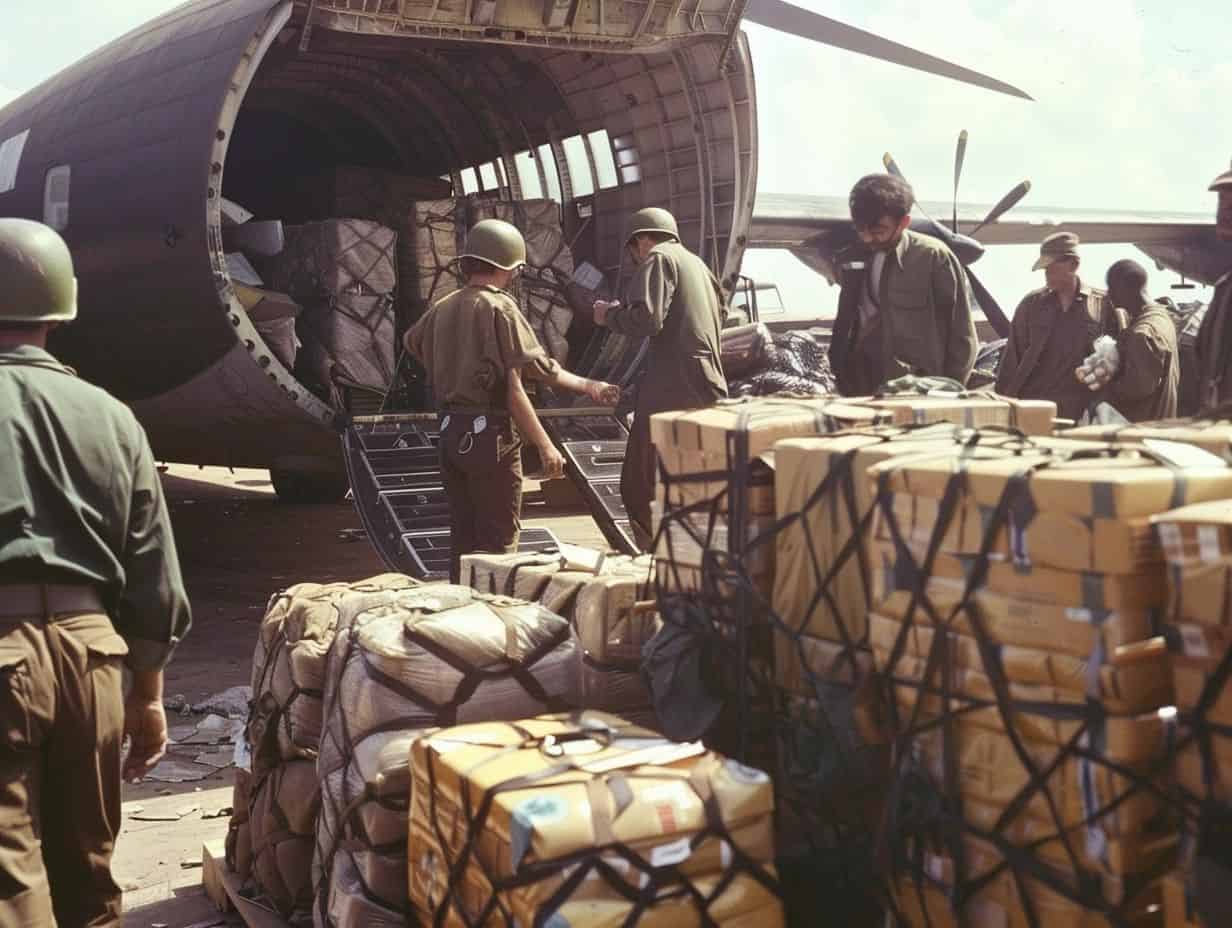In times of crisis and conflict, humanitarian aid is essential in providing necessary support to those in need. One crucial aspect of this aid involves utilizing Meals Ready-to-Eat (MREs) as a source of sustenance for individuals affected by disasters and participating in peacekeeping missions.
The focus is on exploring the significance of MREs in disaster relief and peacekeeping operations, as well as examining both the advantages and challenges associated with their use. Additionally, potential methods for enhancing MREs to increase their effectiveness in humanitarian aid endeavors will be discussed.
This discussion will provide insights into the world of MREs and their influence on humanitarian aid initiatives.
What is Humanitarian Aid?
Humanitarian aid is the assistance offered to individuals in need due to natural disasters, conflicts, or other emergencies by a variety of international organizations, NGOs, and governmental agencies. Its goal is to alleviate suffering, preserve lives, and uphold human dignity during times of crisis.
These efforts typically involve providing essential resources like food, water, shelter, and medical assistance to affected populations. Humanitarian aid also encompasses long-term development initiatives focused on reconstructing communities and fostering sustainable recovery.
Coordinating these aid endeavors often requires cooperation among various stakeholders, including donor nations, relief organizations, local governments, and host communities. Through these collective actions, humanitarian aid plays a critical role in lessening the impact of crisis situations and instilling hope in those who have been impacted.
What are MREs?
Meals Ready-to-Eat (MREs) are self-contained food packages designed for emergency situations such as humanitarian aid, disaster relief, and military operations. These ready-to-eat meals provide essential nutrition and sustenance in challenging environments.
They are specifically crafted to offer a convenient and practical solution for individuals facing crises or situations where access to fresh food may be limited. MREs contain a mix of proteins, carbohydrates, and fats, catering to the caloric intake required for sustenance in demanding scenarios. These food rations are fortified with vitamins and minerals to support overall health and well-being during times of need, ensuring that individuals receive adequate nutrition despite the circumstances inhibiting traditional meal preparation.
What Do MREs Stand For?
MREs, or Meals Ready-to-Eat, serve as a fundamental component of food assistance programs and humanitarian resources utilized in crisis scenarios. These pre-packaged meals are specifically designed to provide sustenance to individuals facing emergency situations where access to conventional cooking facilities or fresh food is restricted.
MREs are meticulously developed to be shelf-stable, lightweight, and easy to transport, making them well-suited for distribution in areas affected by disasters or during humanitarian relief operations. Due to their extended shelf life and high nutritional content, MREs play a critical role in ensuring that impacted populations receive the nourishment necessary to survive and recover during times of crisis.
What Are MREs Made Of?
MREs typically consist of dehydrated or freeze-dried food items that are packaged to ensure a long shelf life and easy distribution during relief operations and food aid programs. These meals are formulated to provide essential nutrients and calories, offering recipients the sustenance they require in times of crisis.
The packaging of MREs is meticulously designed to be durable and compact, making them well-suited for rapid deployment in emergency situations. In relief operations, the convenience of MREs plays a crucial role in efficient food distribution, allowing aid workers to quickly and effectively reach affected populations.
The array of food options in MREs accommodates various dietary requirements, ensuring that a diverse range of individuals can be supported during periods of need.
How Many Calories Do MREs Contain?
MREs are formulated to supply a sufficient amount of calories to fulfill the dietary requirements of individuals in emergency situations, ensuring adequate caloric intake and essential nutritional support. These ready-to-eat meals consist of a precisely calculated mix of proteins, carbohydrates, and fats to sustain energy levels during crises when access to fresh food may be restricted.
Providing approximately 1,200-1,500 calories per meal, MREs play a critical role in offering the required sustenance for individuals encountering difficult circumstances. The array of nutrients and vitamins included in these compact meals aids in the maintenance of bodily functions and the prevention of nutritional deficiencies, rendering them a valuable asset in disaster relief endeavors.
Why are MREs Used in Humanitarian Aid?
MREs are commonly used in humanitarian aid because of their effectiveness in addressing food insecurity, providing rapid emergency relief in humanitarian crises, and meeting the nutritional requirements of vulnerable populations during disasters.
These ready-to-eat meals play a critical role in ensuring that individuals impacted by conflicts, natural disasters, or other emergencies have access to essential nutrition when conventional food sources are disrupted. In emergency relief operations, MREs are essential for maintaining energy levels and promoting the overall health of those in need. Their extended shelf life and ease of distribution make them practical resources for aid organizations working in challenging environments where fresh food access is limited. By offering a source of sustenance that requires minimal preparation, MREs allow for efficient and targeted assistance to vulnerable communities during crisis situations.
How are MREs Used in Disaster Relief?

In disaster relief scenarios, MREs play a crucial role in disaster preparedness plans and humanitarian assistance programs by ensuring that affected populations have access to essential food supplies during emergencies.
These Meal, Ready-to-Eat packs are designed to provide a convenient and nutritionally balanced meal option that does not require cooking or preparation, making them ideal for distribution in areas without access to fresh food or cooking facilities. The compact and durable packaging of MREs also makes them easy to transport and store, allowing for quick deployment in disaster zones. The long shelf life of MREs ensures that they can be stockpiled in advance, contributing to overall disaster readiness and response capabilities.
How are MREs Used in Peacekeeping Missions?
MREs are utilized in peacekeeping missions to aid peacekeeping efforts by supplying sustenance to peacekeepers operating in conflict zones or regions with limited access to food supplies.
These Meals Ready-to-Eat play a critical role in ensuring that peacekeepers have the necessary nutrition to sustain them during long deployments in challenging environments. With the compact and convenient nature of MREs, they offer a practical solution for peacekeeping forces who may be stationed in remote or hostile areas. By having access to readily available meals, peacekeepers can focus on their mission without worrying about sourcing or preparing food. This aspect of logistical support is crucial in maintaining the well-being and operational efficiency of peacekeeping personnel.
What are the Benefits of Using MREs in Humanitarian Aid?
The advantages of using MREs in humanitarian aid include their ease of transport and storage, long shelf life, and minimal preparation requirements, making them suitable for emergency food supply in crisis situations.
Their convenient nature allows for quick distribution to populations in need without the need for cooking facilities or extensive resources. The portability of MREs ensures that they can be easily transported to remote or hard-to-reach areas where access to fresh food may be limited. The long shelf life of MREs means that they can be stored for extended periods without the risk of spoilage or expiration, providing a dependable source of sustenance during times of crisis.
Easy to Transport and Store
MREs are convenient for transportation and storage, aiding in efficient logistics support and the distribution of aid in humanitarian operations to ensure timely delivery of food supplies to affected populations.
The compact and durable quality of MREs makes them well-suited for situations where traditional food supplies may be challenging to transport or store. Their extended shelf life allows for advance stockpiling and straightforward deployment when necessary, simplifying the distribution process. This convenience in storage and transport not only saves time but also reduces the chances of spoilage or damage, ultimately assisting aid organizations in maximizing their resources and reaching a larger number of people in need.
Long Shelf Life
MREs have a long shelf life, which helps reduce food wastage and supports relief organizations in promoting food security for communities in need. This quality is particularly important in emergency situations where timely delivery and storage are critical.
The extended shelf life of MREs enables relief organizations to store these meals for future crises, ensuring a dependable food supply chain during disasters. Leveraging the sustainability of MREs makes relief efforts more efficient and effective in addressing food insecurity globally, positively impacting vulnerable populations.
Require Minimal Preparation
MREs are known for their minimal preparation requirements, making them well-suited for emergency relief situations and offering vital humanitarian aid to populations in crisis, ensuring easy and quick access to nutritious meals.
These ready-to-eat meals are designed to be conveniently portable and have a long shelf life, making them a dependable option for disaster response teams and aid organizations working in challenging environments. The convenience of MREs allows relief workers to focus on efficiently distributing supplies and assisting those in need without the added challenge of cooking facilities or extensive culinary skills. This accessibility feature plays a critical role in ensuring that individuals affected by disasters receive timely nourishment and care during critical periods.
What are the Challenges of Using MREs in Humanitarian Aid?

Despite their benefits, MREs face challenges in humanitarian aid, including limited nutritional variety, high production costs, and the potential to create dependence on aid among recipients.
While MREs provide sustenance during emergencies, their nutritional content can lack diversity, potentially leading to deficiencies in essential vitamins and minerals. The high production costs of MREs contribute to the financial burden of humanitarian organizations, limiting the quantity that can be distributed.
The reliance on MREs may also inadvertently foster a sense of aid dependency among communities, hindering their ability to achieve self-sufficiency and sustainable development in the long term.
Limited Nutritional Variety
Meals Ready-to-Eat (MREs) may have limited nutritional variety, which can make it challenging to meet the diverse dietary needs of populations in conflict zones and regions with food insecurity. This limitation could potentially affect overall food security measures.
The lack of nutritional diversity in MREs may result in deficiencies in essential nutrients like vitamins, minerals, and protein, which are crucial for maintaining health, particularly in crisis-affected areas. In conflict zones where access to a balanced diet is already difficult, relying on MREs could worsen malnutrition and health problems among vulnerable populations.
The repetitive nature of MRE contents might lead to food monotony, impacting not only physical health but also psychological well-being. It is important to address this issue to promote sustainable food security and enhance the resilience of communities facing these challenges.
Expensive to Produce
The production of MREs can incur significant costs, presenting financial challenges for aid organizations and humanitarian workers engaged in swift crisis response activities, impacting the overall effectiveness of humanitarian crisis response endeavors.
These financial challenges stem from the expenses associated with procuring, transporting, storing, and distributing MREs. The urgency of crisis response situations often necessitates expedited production processes, leading to increased costs. Aid workers are consistently faced with the need to balance the urgency of delivering life-saving assistance quickly with the importance of managing limited budgets efficiently. These cost considerations underscore the delicate equilibrium between providing essential aid during emergencies and ensuring the sustainability of humanitarian endeavors in the long term.
Can Cause Dependence on Aid
Reliance on MREs can potentially lead to a dependency on aid among populations in refugee camps, challenging humanitarian principles related to promoting self-sufficiency and sustainable solutions for long-term relief and development.
This aid dependency may establish a cycle in which communities rely on external assistance without developing the necessary skills or infrastructure to support themselves independently. Prolonged reliance on MREs not only impedes the camp populations’ ability to rebuild their lives but also undermines the objective of fostering self-reliance and resilience.
Balancing immediate assistance provision with give the power toing refugees to regain their autonomy is crucial for upholding humanitarian values like dignity, give the power toment, and lasting impact within refugee camp environments.
How Can MREs be Improved for Humanitarian Aid?
Improving MREs for humanitarian aid involves increasing their nutritional value, cutting production costs, and exploring alternative food options to better assist humanitarian initiatives and optimize relief supplies.
One effective approach to enhance MRE effectiveness is to focus on enriching these meals with essential vitamins and minerals, ensuring that recipients receive a balanced and nourishing diet. Investing in research and development to discover cost-effective production methods can help increase the accessibility of MREs during relief efforts.
By varying the types of food included in MRE packages, such as integrating more locally sourced ingredients, organizations can address the diverse dietary requirements of populations in crisis situations.
Increasing Nutritional Value
One approach to improving Meals Ready-to-Eat (MREs) for humanitarian aid is by enhancing their nutritional value to address food insecurity challenges and align with the goals of humanitarian programs focused on nutrition assistance and sustainable food access.
By increasing the nutrient density and diversifying the ingredients used in MREs, organizations can better meet the dietary needs of populations facing food insecurity. This strategic revamp not only ensures that individuals receive sufficient nourishment but also contributes to their overall health and well-being. Fortified MREs can play a vital role in preventing malnutrition and related health issues, ultimately supporting the overarching objectives of humanitarian efforts aimed at promoting food security worldwide.
Reducing Production Costs

Reducing the production costs of MREs can improve their affordability and facilitate more effective aid distribution systems, ultimately enhancing humanitarian support for populations in need during emergencies.
This cost-saving strategy enables humanitarian organizations to maximize their resources, reaching a larger number of recipients within the same budget. By streamlining production expenses—such as sourcing ingredients cost-effectively or enhancing manufacturing processes—aid agencies can divert more funds to essential services like medical assistance, shelter, and clean water provision. Ultimately, these cost savings result in tangible benefits for communities impacted by crises, ensuring that aid is delivered promptly and sustainably to those most in need.
Exploring Alternative Food Options
Exploring alternative food options beyond traditional MREs can enhance the variety of food aid choices available for humanitarian projects, promoting innovation and adaptability in addressing a wide range of nutritional needs during relief operations.
By introducing creative food solutions that take into account cultural preferences and dietary restrictions, organizations involved in humanitarian efforts can better meet the nutritional requirements of diverse populations. Embracing a range of food options like plant-based proteins, locally sourced ingredients, and prepared meals customized to specific dietary needs can help improve the effectiveness and appeal of food aid programs. This shift towards culinary diversity not only ensures the provision of essential nutrients but also encourages cultural sensitivity and community involvement in humanitarian projects.
Frequently Asked Questions
What is the purpose of MREs in disaster relief and peacekeeping missions?
MREs (Meals Ready-to-Eat) are pre-packaged food rations designed for use in emergency situations. They provide essential nutrients and sustenance for those affected by disasters and for peacekeeping personnel in remote locations.
How are MREs different from regular meals?
MREs are specifically designed to withstand harsh conditions and have a longer shelf life compared to regular meals. They are also compact and lightweight, making them easy to transport and distribute in emergency situations or during peacekeeping missions.
Do MREs provide enough nutrition for individuals in need?
Yes, MREs are nutritionally balanced and typically contain between 1,200-1,300 calories per meal. They also include a variety of food groups such as proteins, grains, fruits, and vegetables to ensure individuals receive the necessary nutrients.
Can MREs be customized for specific dietary needs?
Yes, MREs can be customized to accommodate various dietary needs and restrictions. This includes options for vegetarian, gluten-free, and halal meals.
How are MREs distributed in disaster relief and peacekeeping missions?
MREs are typically distributed by aid organizations and military personnel. They are often included in relief packages or distributed directly to individuals in affected areas. MREs are also used in peacekeeping missions to sustain personnel in remote locations.
Are there any concerns with using MREs in humanitarian aid efforts?
While MREs are a necessary source of sustenance in emergency situations, there have been some concerns about the long-term health effects of consuming them for extended periods of time. It’s important for aid organizations and military personnel to monitor the use of MREs and provide alternative food options when possible.


